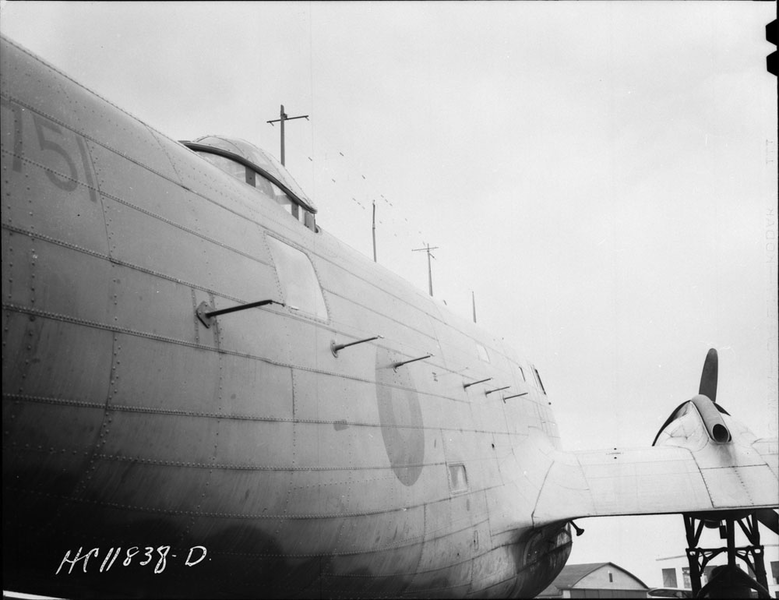File:ASV Mk II side array on Douglas Digby at Rockcliffe.png

Original file (1,000 × 770 pixels, file size: 487 KB, MIME type: image/png)
Captions
Captions
Summary[edit]
| DescriptionASV Mk II side array on Douglas Digby at Rockcliffe.png |
English: This image shows the ASV Mk. II side-looking antennas installed on a Douglas Digby of No. 751 Squadron, RCAF, seen at RCAF Rockcliffe on 1 October 1944.
ASV Mk. I was the first airborne radar system, reaching operational status in 1939. It allowed aircraft to search the surface of the ocean for objects like ships and U-boats. It proved almost useless for this role, but navigators used it extensively for stationkeeping with convoys as well as a navigational tool. The Mk. II was a cleaned up version, which also added an optional second set of antennas looking to the sides of the aircraft. Because these antennas lay along the top and side of the aircraft they were more streamlined and could be made much larger without effecting performance, which greatly improve detection range. A Mk. II aircraft would fly a search pattern with the side antennas selected, reaching both sides for any objects to appear. When one was seen, they would mark its position on a map, switch the radar to the front-firing antennas, and commence a run on the target. Examples of the ASV were supplied to the Canadians in August 1940 as part of the Tizard Mission. They began producing sets at Research Enterprises in Toronto, and these were widely used on Canadian and US aircraft. This aircraft, a Douglas Digby (B-18 Bolo) must be one of the earliest Canadian aircraft to be fit with this radar. |
| Date | |
| Source | http://data2.archives.ca/ap/a/a064043-v8.jpg |
| Author | Unknown Canadian Air Force photographer, MIKAN no. 3388533 |
Licensing[edit]
| Public domainPublic domainfalsefalse |
This Canadian work is in the public domain in Canada because its copyright has expired due to one of the following:
it was not subject to Crown copyright, and
العربية ∙ বাংলা ∙ čeština ∙ Deutsch ∙ English ∙ español ∙ suomi ∙ français ∙ italiano ∙ 日本語 ∙ 한국어 ∙ македонски ∙ മലയാളം ∙ Nederlands ∙ português ∙ português do Brasil ∙ sicilianu ∙ slovenščina ∙ 简体中文 ∙ 繁體中文 ∙ +/− |
File history
Click on a date/time to view the file as it appeared at that time.
| Date/Time | Thumbnail | Dimensions | User | Comment | |
|---|---|---|---|---|---|
| current | 18:24, 2 December 2014 |  | 1,000 × 770 (487 KB) | Maury Markowitz (talk | contribs) | User created page with UploadWizard |
You cannot overwrite this file.
File usage on Commons
The following page uses this file:
